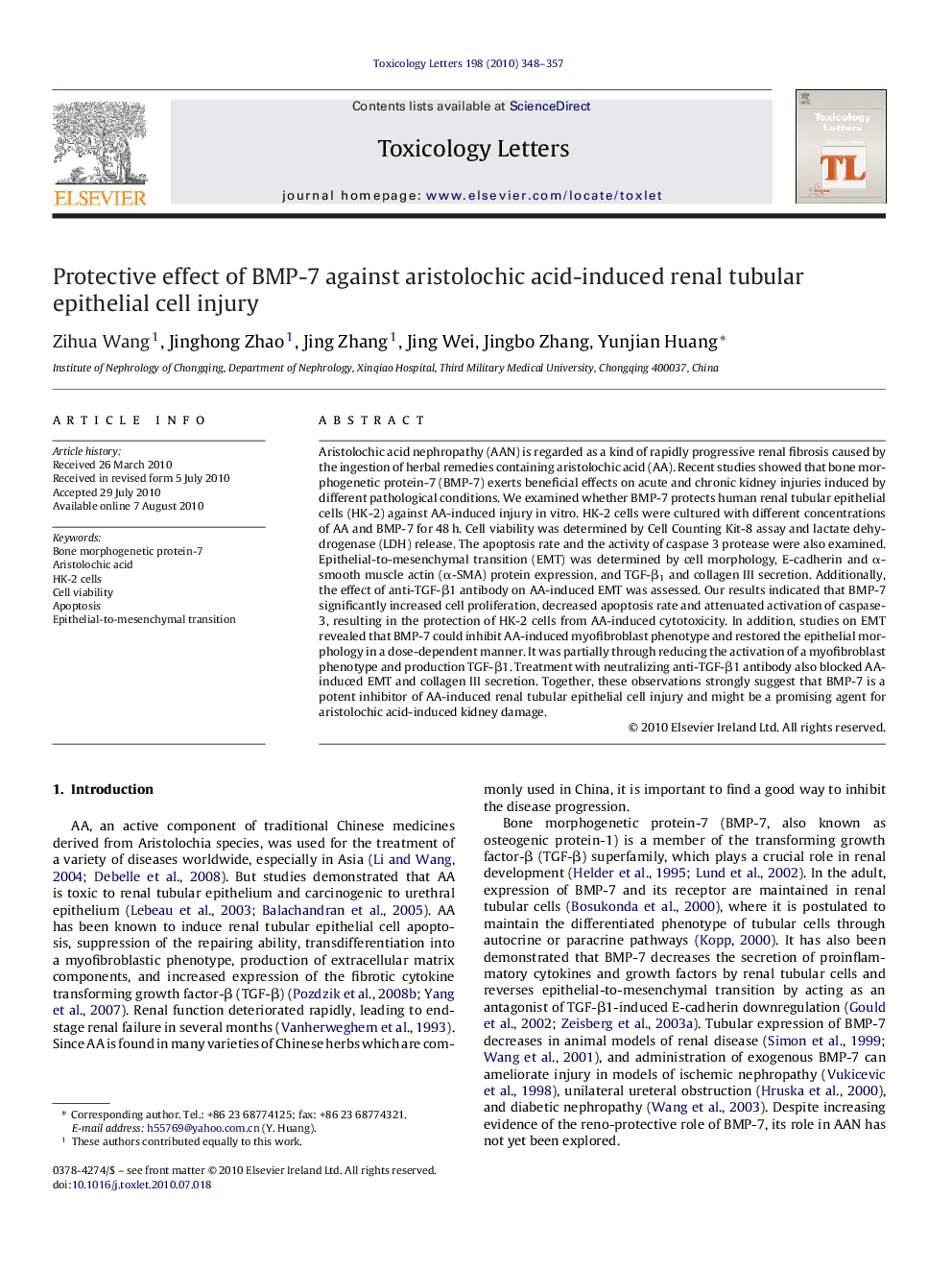| Article ID | Journal | Published Year | Pages | File Type |
|---|---|---|---|---|
| 2600554 | Toxicology Letters | 2010 | 10 Pages |
Aristolochic acid nephropathy (AAN) is regarded as a kind of rapidly progressive renal fibrosis caused by the ingestion of herbal remedies containing aristolochic acid (AA). Recent studies showed that bone morphogenetic protein-7 (BMP-7) exerts beneficial effects on acute and chronic kidney injuries induced by different pathological conditions. We examined whether BMP-7 protects human renal tubular epithelial cells (HK-2) against AA-induced injury in vitro. HK-2 cells were cultured with different concentrations of AA and BMP-7 for 48 h. Cell viability was determined by Cell Counting Kit-8 assay and lactate dehydrogenase (LDH) release. The apoptosis rate and the activity of caspase 3 protease were also examined. Epithelial-to-mesenchymal transition (EMT) was determined by cell morphology, E-cadherin and α-smooth muscle actin (α-SMA) protein expression, and TGF-β1 and collagen III secretion. Additionally, the effect of anti-TGF-β1 antibody on AA-induced EMT was assessed. Our results indicated that BMP-7 significantly increased cell proliferation, decreased apoptosis rate and attenuated activation of caspase-3, resulting in the protection of HK-2 cells from AA-induced cytotoxicity. In addition, studies on EMT revealed that BMP-7 could inhibit AA-induced myofibroblast phenotype and restored the epithelial morphology in a dose-dependent manner. It was partially through reducing the activation of a myofibroblast phenotype and production TGF-β1. Treatment with neutralizing anti-TGF-β1 antibody also blocked AA-induced EMT and collagen III secretion. Together, these observations strongly suggest that BMP-7 is a potent inhibitor of AA-induced renal tubular epithelial cell injury and might be a promising agent for aristolochic acid-induced kidney damage.
